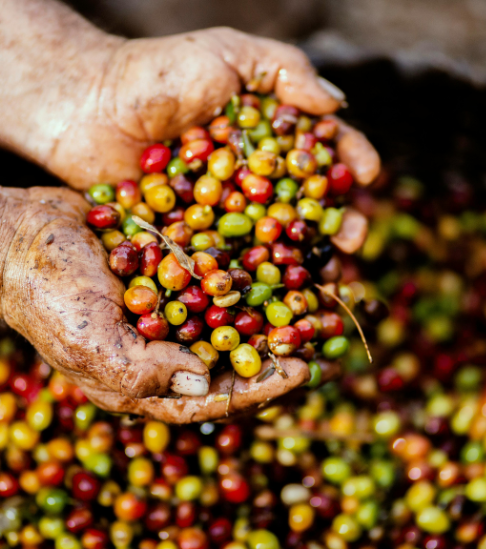
COFFEE IS MORE EXPENSIVE. KNOW WHY?
If drinking coffee is part of your routine, you've probably noticed that the price has gone up.
Climate issues that impact production, restrictions on transport logistics, regulatory issues, growing demand for Robustas and some speculation in the market have dictated this evolution.
The coffee sector is facing an unprecedented challenging period, as a result of the continuous and galloping growth in the price of green coffee, particularly Robustas, which are reaching historic levels and are scarce in the markets. According to the World Coffee Organization, Robusta Coffee rose 74% in the last year alone (Jul 23 to Jul 24), but the upward trajectory began 3 years ago.
Understand better what has caused the price of coffee to rise:
Climate issues:
The production of green coffee requires very specific conditions of altitude, temperature, precipitation and air humidity, and as such is very exposed to climate change.
Phenomena such as Frost, Rain and Drought (especially those generated by the El Niño phenomenon) have greatly affected the production of the largest coffee producers.
In particular, rains and bad agricultural years have affected Robusta production in Vietnam (main producer of this variety) in recent years.
Regulatory issues:
Two major factors have conditioned the availability of green coffee in the last 2 years: the ban on recertifying coffee that is more than 2 years old for listing on the Stock Exchange and the imminent EU ban on transacting coffee produced in recently deforested areas. Under the new EU regulation, any operator or trader placing products on the EU market, or exporting from it, must prove that the products do not come from land that has been recently deforested or has contributed to forest degradation. This implies excluding a large part of current coffee producers, who would have to invest in digital mapping systems for their farms, as most of them do not have this capacity. The result will naturally be a scenario of unprecedented scarcity.
Logistical and geopolitical issues:
The outbreak of conflict between Israel and the Islamist group Hamas at the end of 2023 and subsequent attacks by the Houthis on cargo ships in the Red Sea led to the diversion of routes, which increased delivery times and transport costs for green coffee, namely Robusta from Vietnam and Indonesia.
Search:
World coffee consumption is growing at a rapid pace. Since 2021, Europe has been the main coffee consumer market, consuming 24% of world production, but it is in countries with less tradition in this drink, such as Asia, that the most pronounced growth has been recorded. However, the great pressure on the main variety consumed in Portugal observed in recent months is exerted in another way. The countries of Northern Europe, typically consumers of Arabica, faced with the increase in prices for this variety, began to introduce Robusta (historically cheaper), increasing the price of the latter on the market.
Climate and regulatory issues result in shortages in a market where demand is increasing. The imbalance between supply and demand naturally creates pressure on prices, which is worsened by higher transport costs. Added to this natural movement, some speculation in the market prevents prices from correcting or even stabilizing and it is not clear that this will happen in the near future.
Given this scenario, it is expected that the market will evolve in the way it consumes coffee, and that brands will transform this into a higher value product.
We will evolve towards higher quality, more sustainable blends and a superior sensory experience in increasingly less functional consumption situations.
COFFEE IS MORE EXPENSIVE. KNOW WHY?


